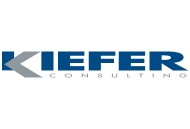The world’s shift to remote work in 2020 demonstrated that the right tools and workplace culture could keep organizations productive and collaborating, no matter where their employees may be working from.
Kiefer Consulting was an early adopter of Microsoft Teams, and we immediately recognized similarities between the collaboration capabilities of Microsoft Teams and SharePoint Team Sites. We went to work on a governance plan for Teams and established policies for team provisioning and lifecycle management. We expressed the need for governance in all our Microsoft Teams engagements and helped many clients build a governance plan that kept teams productive, but also pro-actively controlled Teams “sprawl” and improved the user experience.
Microsoft Teams is built on SharePoint and is a robust and unified communications platform that is built for the modern workplace. Teams features chat, the ability to conduct video meetings, file storage, and the ability to integrate with other applications. Teams seamlessly integrates with other applications in Microsoft 365 products and can integrate with many non-Microsoft services. Many users spend most of their time in Teams. We have discovered that Teams is built for the remote worker, offering the ability to use “one door” to all the capabilities of Microsoft 365.
Governance and policy setting is important. Turning on Teams without a plan can result in Teams “sprawl”. It is important to control how Teams are provisioned, whether or not the collaboration space should be a Team site or a “channel” and it is important to manage the lifecycle of Teams. An organization can easily become overwhelmed by the number of Teams sites and the corresponding SharePoint sites, that are created every time a Team is created. Here are a few things to keep in mind.
Defining a governance approach
Without an overarching plan that defines when and how collaboration sites are created, organizations should consider how sites are provisioned and how those sites will be decommissioned. At Kiefer, we have established a naming convention that helps to ensure duplicate Teams are not being created. We also have worked to build a logical information architecture that makes teams easy to find and allows us to quickly identify teams that are no longer relevant and should be decommissioned. We have also recommended tools that automate governance. AvePoint is a great solution if you’d like to implement a tool that assists users in provisioning sites and helps the organization in uncovering sites that are inactive.
Files in Teams. Are they in SharePoint?
The ability to share files in Teams is an awesome feature, and we’ve found that best-in-class organizations have replaced sending e-mail attachments and moved to document collaboration in Teams. It is important to note that while Teams does use SharePoint, it does not treat these files like a document that are stored in SharePoint. If users want to apply tags, manage versions, or set retention and deletion rules, users have to open the document in SharePoint.
How long will you need a Team?
Projects end, teams disband… what happens to the Team. A Governance plan should address the archive of sites and the retention of content beyond the life span of the Team. We have suggested that the content associated with a team be moved to a long-term content management system (like SharePoint) when a Team is decommissioned. There is no need to keep an inactive Team “active” if the Team no longer has use for a collaboration space.
Team or SharePoint Collaboration Site?
This question is so common that we wrote an entire blog about it. In short, While the 2 products have both offer users the ability to collaborate, share content with a specific set of users, and co-author, we have found that there are some certain conditions where one may be a better choice than the other. Check out the article to better understand the differences and advantages of one over the other.
Site Templates: A better way to collaborate
Designing your collaboration workspaces to align with how your teams work is an important consideration. Templates are useful in helping users find information and creating a familiar collaboration experience. Kiefer’s team of consultants are well versed in information architecture and can help you in creating sites that allow users get to work… fast.
Standardizing your Microsoft 365 toolset
Microsoft has a number of applications that share useful features, so choosing the right application and creating organizational standards is crucial. It is common to see organizations leveraging a mix of tools with a common feature set and unable to share content and collaborate. We recommend a strategy that allows the organization to standardize on a set of collaboration tools.
Collaboration and governance go hand in hand. Kiefer can help you in developing an enterprise collaboration strategy for your organization. We can help you in choosing the right tools and building a culture of collaboration. Contact us to learn more or talk to the experts.








